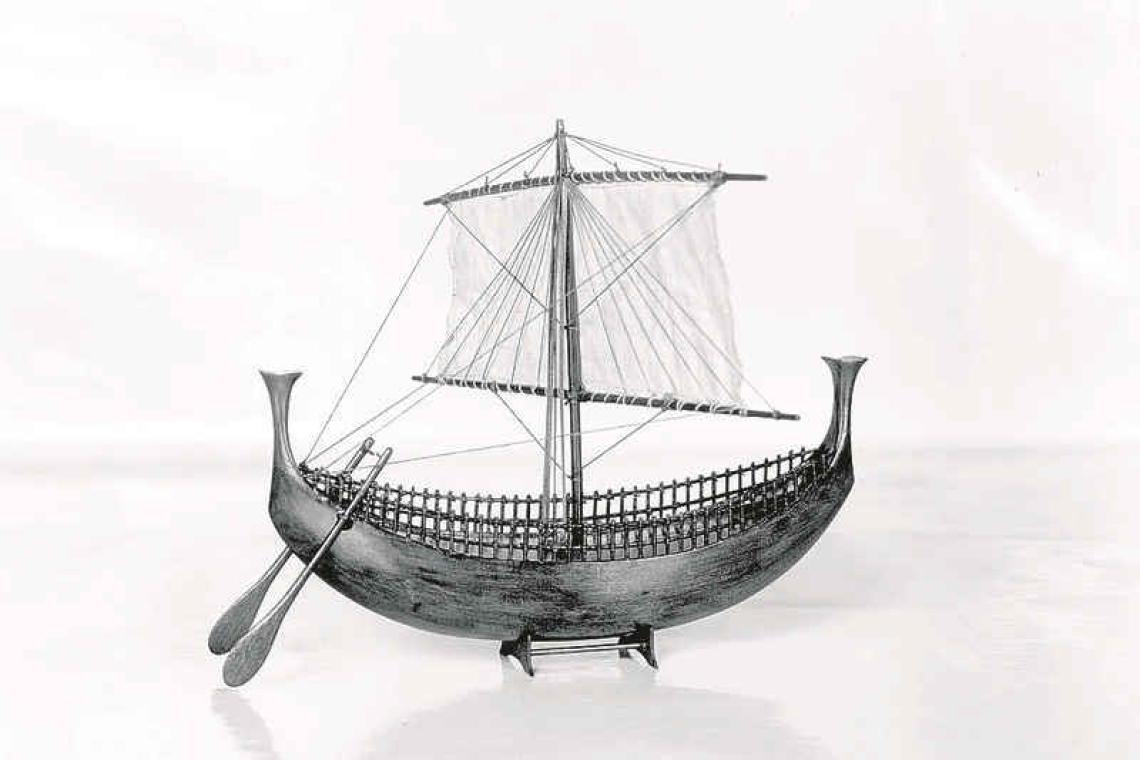Photo: Model of a Phoenician ship, 13th century BCE. Picture credit: The Museum of the Philadelphia Civic Center, via Britannica.com.
Sailing was not always done for sport or recreation. In fact, the use of boats can be traced back to the earliest parts of human history. The earliest boats known were as simple (yet genius) as canoes dug out from tree trunks, and simple rafts made of wooden logs or reeds.
There is archaeological evidence going back at least 50,000 years showing that people used boats to cross different bodies of water. The first sailing boats known date back to ancient Egypt! And while there have been many changes in technology and innovations over thousands and thousands of years, the basic principles of sailing remain the same.
While sails had been used on boats, usually together with rowing, the change to “pure” sailing ships was a major innovation, although it came about in many small stages. Sails started as large, square canvases, then changed to more complex arrangements that could pivot (move positions) on the mast (the large pole that supports the sails), depending on the direction of the wind. The more complex sails could use both gentle and strong winds, and sailors could better direct the boats.
The history of sailing is intricately linked to the history of human civilization. Sailing allowed for much better ability to move around quickly, than travelling over land. The ability to move around quickly meant a better ability to explore new lands, transport goods, establish trade, share ideas, and the list goes on and on. Sailing was incredibly important to many ancient, successful civilizations, who used their mobility to expand their power and influence. Seafaring became an important part of life in many parts of the world. Eventually, boats became advanced enough so that humans could cross longer and longer stretches of water, even oceans.
Humans would not inhabit any islands, the ones in the Caribbean like ours, or islands that are incredibly isolated such as those in the Pacific Ocean, if it were not for people sailing. When people spread to any part of the world, many times they still needed sailing to survive, since it facilitated the transport of food and other goods. In short, the history of the world has been formed and shaped by this feat of human ingenuity. “Ingenuity” is the quality of being clever and inventive.
Sailing and seafaring with various types of boats – even advanced or large boats – require lots of skill, hard work, and teamwork. The waters, whether in lakes or the open sea, can be dangerous.
We found a classic poem, written in 1849, that expresses the fear that experienced sailors can have, when encountering a storm while at sea. The poem expresses both despair and hope.
Ballad Of The Tempest
James Thomas Fields
We were crowded in the cabin,
Not a soul would dare to sleep –
It was midnight on the waters,
And a storm was on the deep.
’Tis a fearful thing in winter
To be shattered by the blast,
And to hear the rattling trumpet
Thunder, “Cut away the mast!”
So we shuddered there in silence –
For the stoutest held his breath,
While the hungry sea was roaring
And the breakers talked with death.
As thus we sat in darkness
Each one busy with his prayers,
“We are lost!” the captain shouted,
As he staggered down the stairs.
But his little daughter whispered,
As she took his icy hand,
“Isn’t God upon the ocean,
Just the same as on the land?”
Then we kissed the little maiden,
And we spake in better cheer,
And we anchored safe in harbour
When the morn was shining clear.







